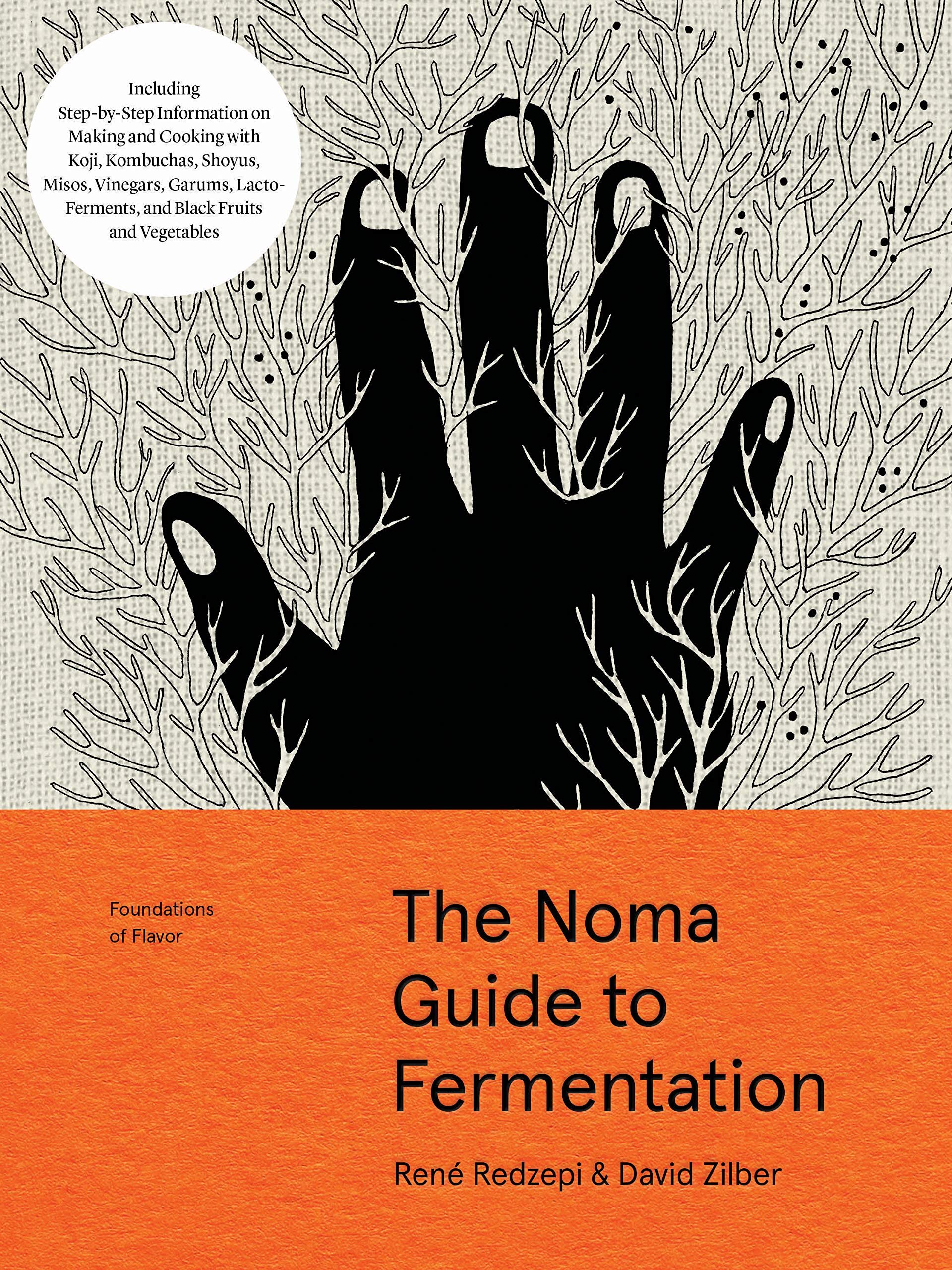How To Make Kombucha Syrup
If you brew your own kombucha, sooner or later a batch isn’t going to come out the way you want it to. It’ll be too sour, too bland, too strong, or just kind of weird.
I (Robyn) spent a few weeks this summer trying to reclaim the glory of the only perfect coffee kombucha I’ve ever made. The first batch tasted exactly like a smooth, chocolate-y stout, but every time I tried to make it again, whether I recreated the conditions exactly or tweaked the recipe, I got a murky brew that was somehow too acidic AND so sweet it gave me a sugar headache. My experiments left me down a bag of fancy coffee beans and up about 2 dozen litres of kombucha that I had no desire to drink, but would hate to throw away and waste.
Luckily, I also had a copy of The Noma Guide to Fermentation.
Redzepi & Zilber, authors of The Noma Guide to Fermentation. Redzepi, left, is Danish and the co-founder/head chef of the world-renowned Noma restaurant. Zilber, right, has served as the director of Noma’s fermentation lab since 2016. (He’s originally from Toronto!)
If you are a home kombucha brewer, trying to reduce your food waste, or just curious about the infinite applications for fermented ingredients, I would highly recommend The Noma Guide. Each of Redzepi and Zilber’s ferments is scaled down for the home cook, and includes detailed step-by-step instructions and pictures of each stage so you never have to worry about whether or not you’re “doing it right”. I appreciated that a lot of the recipes transform food waste, like stale bread or sour kombucha, into gourmet ingredients so delicious you might let your ‘buch go sour on purpose.
Enter kombucha syrup!
From The Noma Guide to Fermentation:
Almost any kombucha can be cooked down to a remarkable and complex syrup, but it works especially well with kombuchas that are approaching the point of being too sour. Pour about 450 millileters of kombucha into a medium saucepan on the stove over medium-low heat. Let the liquid slowly evaporate until it’s about one-quarter of its original volume and can coat the back of a spoon. The slower the kombucha reduces, the better - don’t let it come to a boil or you’ll cook out all the flavor.
The next time you cook a batch of pancakes, drizzle a bit of this syrup over the top. It won’t be as sweet as maple syrup, so if you have a sweet tooth, you may want to add a dusting of powdered sugar. As a dessert, spoon some lemon verbena kombucha syrup over good-quality ice cream. Bonus points if you sprinkle freshly picked lemon verbena on top.
The sour-sweet coffee kombucha was TRANSFORMED by this process, and I had a delicious few months of pancake breakfasts and ice cream sundaes to show for a few hours of idling around in my kitchen and occassionally stirring a saucepan.
Before sharing the recipe, I wanted to test it with a less unusual flavour. Our Turmeric Chai seasonal seemed like a good candidate, and since I thought the spice and color would pair well with breakfast or dessert, I grabbed a growler and set to work.
It really is hardly work, though. If you’re not the kind of cook who spends a full afternoon in the kitchen, I’d suggest planning a few tasks to keep you occupied while the kombucha boils down. As you can see, I had a large cast-iron pan of onions to carmelize. Between the onions, the syrup, and a good book, the 2 hours in the kitchen sped by.
Another tip: when testing reductions/syrups, I like to keep the testing spoon in the freezer until I need it. Boiling until the liquid coats the back of a spoon is the standard test, but with a big batch of syrup you run the risk of the syrup reducing/thickening too much while it cools down. Using theback of an ultra-cold spoon gives me a better idea of how the syrup will behave after being stored in the fridge, which means you’re less likely to end up with un-pourable syrup a few weeks down the line.






